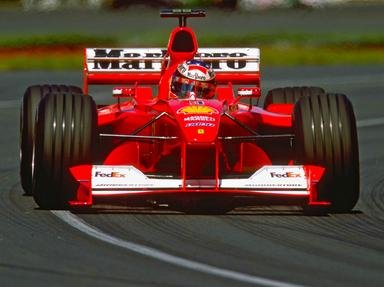Quiz Answer Key and Fun Facts
1. Who was the first F1 World Champion?
2. The first three drivers in the Championship table all drove for the same team, an Italian constructor that dominated the season. What was that dominant team?
3. The Alfa Romeo team won every race in the season except for the Indy 500. But only two drivers in the team managed to win a Grand Prix. Who were they?
4. A pole position doesn't always turn into a win. Farina and Fangio tied in wins in the 1950 season, but who had the most pole positions?
5. Farina and Fangio also tied in fastest laps (3 each), but why were fastest laps important back then?
6. Technically, every driver in 1950 was a rookie, since it was the first official Championship, but there had been several F1 races before that year, so, drivers like Farina or Fangio actually started racing in the 1930s. How old was Farina when he won the last Grand Prix of the season, in Italy?
7. The Indianapolis 500 was a part of the Formula One calendar from 1950 to 1960, although very few teams made the trip to the United States in those 11 years. In 1950 it was an all American affair and 32 out of the 33 starters even had the same engine. Nicknamed "Offy", what engine am I talking about?
8. In its early days, Formula One was a very dangerous sport. In 1950, we lost two drivers, though neither in a Championship event. Britain's Joe Fry died in a hillclimbing event and a Frenchman, who drove for Ferrari and Talbot-Lago in the 1950 season, lost his life in a non-championship race after the end of the season. Who was he?
9. In the days before advertising, cars usually had the colors of their team's country. Since Alfa Romeo was an Italian team, what was the predominant color leading the pack in 1950?
10. The Ferrari team has always raced with their own engines. However, in the Italian GP, Clemente Biondetti entered his privateer Ferrari with a very unusual engine. What brand was that engine?
Source: Author
Caeiro
This quiz was reviewed by FunTrivia editor
ozzz2002 before going online.
Any errors found in FunTrivia content are routinely corrected through our feedback system.

